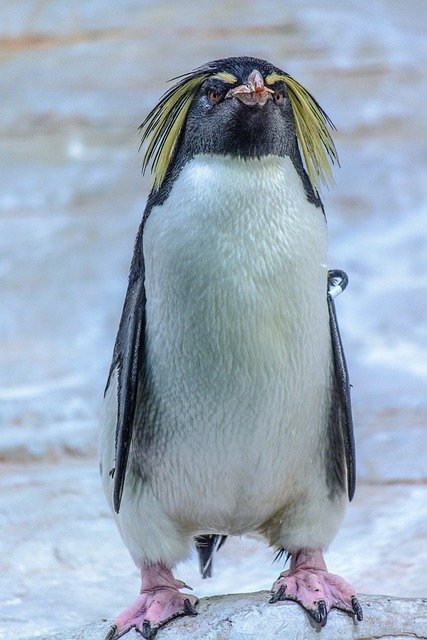**Title: "The Social Dynamics of Penguins: Understanding Their Complex Communities"** **Post Overview:

The Social Dynamics of Penguins: Understanding Their Complex Communities
Penguins are often celebrated for their charming waddles and striking appearances, but beneath their adorable exterior lies a complex social structure that is vital to their survival. In this post, we will explore the fascinating social dynamics of penguin communities, shedding light on their behaviors, hierarchies, and interactions.
The Importance of Social Structure
Penguins are highly social birds that thrive in colonies, which can range from a few dozen to several thousand individuals. These colonies provide numerous benefits, including:
Protection from Predators: Living in large groups helps penguins reduce the risk of predation. The sheer number of individuals can deter potential threats and provide safety in numbers.
Thermoregulation: In harsh Antarctic climates, huddling together allows penguins to conserve heat and protect themselves from the cold.
Cooperative Breeding: Many species of penguins engage in cooperative breeding, where individuals assist in caring for the young of others, thereby increasing the survival rate of the chicks.
Hierarchies and Social Interactions
Dominance Hierarchies
Within penguin colonies, a clear social hierarchy often emerges. Dominance can be established through various behaviors, such as vocalizations, displays, and physical confrontations. Higher-ranking individuals typically have better access to resources, such as prime nesting sites and food, while lower-ranking birds may have to work harder to secure these necessities.
Communication
Penguins communicate using a variety of vocalizations and body language. Each species has its own unique calls, which can convey different messages, such as alarm calls or mating calls. Additionally, physical displays, such as bowing or flapping wings, play a crucial role in social interactions, helping to establish relationships and maintain order within the colony.
Bonding and Relationships
Penguins form strong social bonds, both with their mates and within their colonies. Monogamous pair bonds are common, with many species returning to the same partner year after year. These bonds are reinforced through mutual grooming and synchronized movements, which strengthen their connection and improve their chances of successful breeding.
Challenges to Social Dynamics
Despite their robust social structures, penguin communities face numerous challenges, particularly in the face of climate change and human activity. Changes in sea ice patterns, overfishing, and pollution can disrupt their habitats and food sources, leading to increased competition and stress within colonies.
Conservation Efforts
Understanding the social dynamics of penguins is crucial for their conservation. By studying their behaviors and interactions, researchers can develop targeted strategies to protect these remarkable birds and their habitats. Conservation efforts may include:
Protecting breeding grounds: Ensuring that key nesting sites are preserved and free from human interference.
Monitoring populations: Tracking penguin populations to assess the health of colonies and identify potential threats.
Raising awareness: Educating the public about the importance of penguins and the challenges they face can foster support for conservation initiatives.
Conclusion
The social dynamics of penguins are a testament to their adaptability and resilience in the face of environmental challenges. By delving into their complex communities, we gain a deeper appreciation for these remarkable birds and the intricate relationships that sustain them. As we continue to study and protect penguins, we must remember that their survival is intricately linked to the health of our planet.
Join the conversation! What are your thoughts on the social behaviors of penguins? Share your insights in the comments below!
